Hello, I’m Salik Waquas—a full-time film colorist with a passion for transforming mere footage into living, breathing art. As the creative force behind Color Culture, I’ve spent years perfecting the alchemy of hue, shadow, and light, blending technical mastery with a dash of artistic flair. Today, I invite you to join me on “The Brutalist” cinematography analysis article.
About the Cinematographer
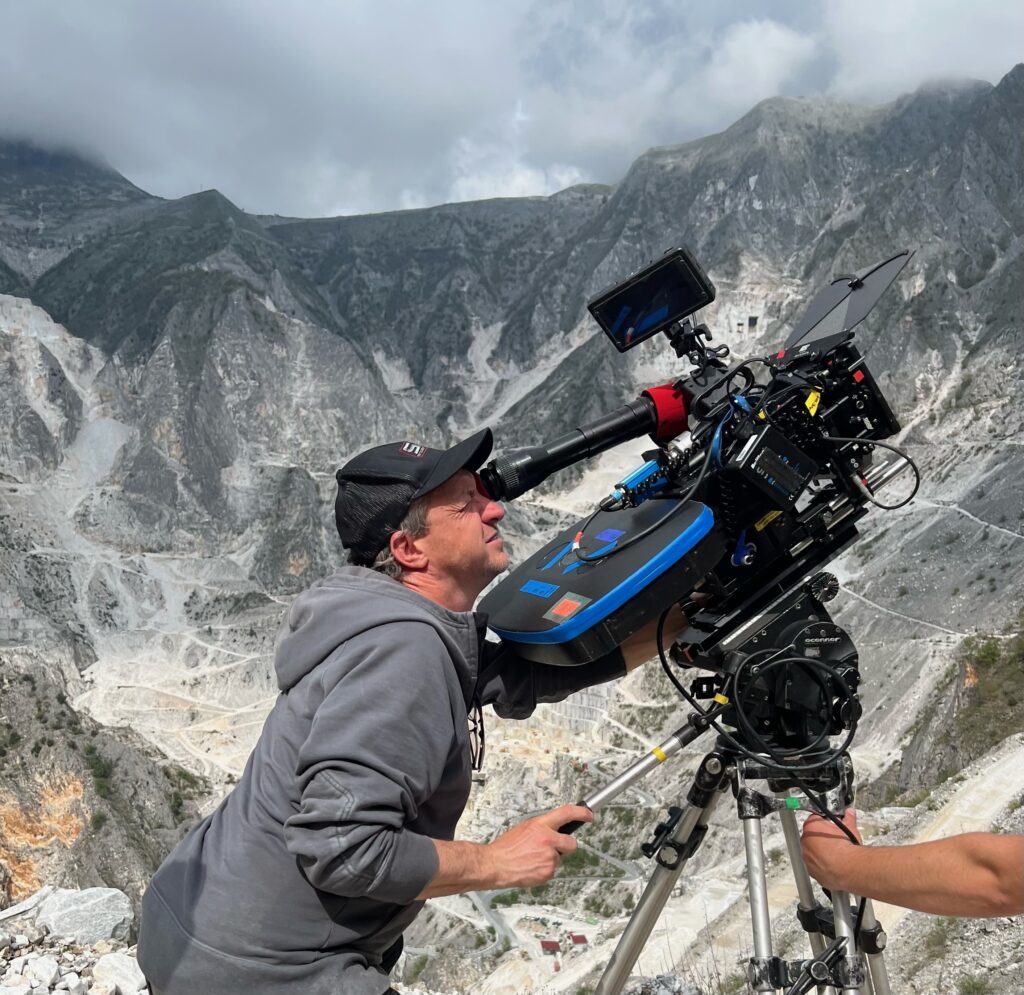
Let me introduce you to the man behind the lens: Lol Crawley. If there’s one thing that makes “The Brutalist” sing, it’s his remarkable ability to capture the raw poetry of concrete and light. Lol is no stranger to Brady Corbet’s cinematic playground, having collaborated on projects from The Childhood of a Leader to Vox Lux.
Lol’s work isn’t just about framing a shot; it’s about breathing life into the very architecture of the narrative. His dedication to using celluloid, his preference for Cooke S4 lenses, and his insistence on formats like VistaVision echo a commitment to authenticity and artistry that I, as a colorist, deeply admire. In every frame, he manages to balance the austerity of brutalism with moments of tender humanism, a dichotomy that speaks directly to the soul of the film.
Inspiration for the Cinematography of “The Brutalist”
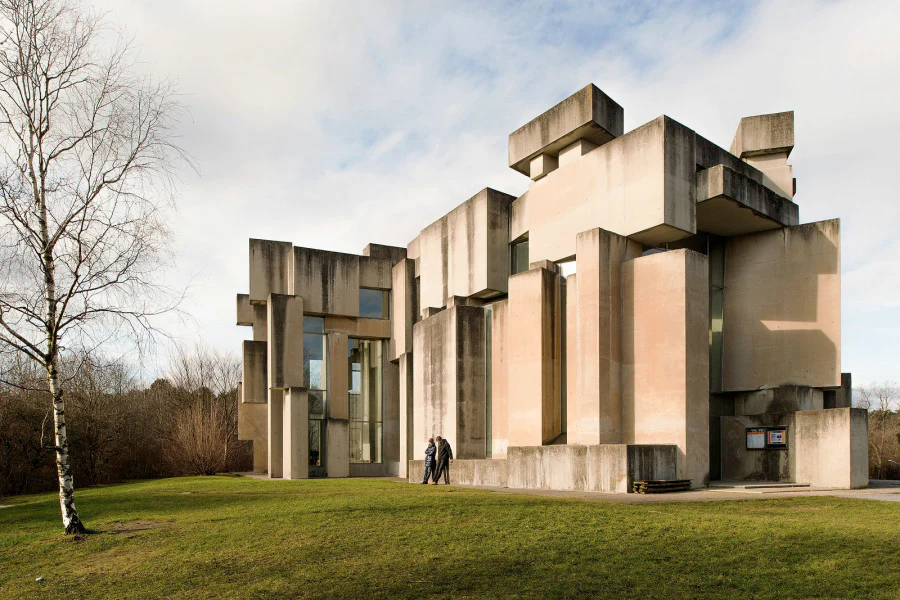
The film draws its inspiration from the very essence of brutalism: a design philosophy born in the ashes of a war-torn world. Brutalism, with its rugged textures and unadorned forms, is as confrontational as it is honest. Its unapologetic use of raw concrete—a material that many dismissed as cold and uninviting—became a canvas for stories of resilience and reinvention.
For me, the cinematography of “The Brutalist” resonates as a visual metaphor for the human spirit. Just as brutalist architecture stripped away ornamentation to reveal the naked truth of structure, the film’s visual language lays bare the emotional and physical scars of its characters. Take llo, the Hungarian architect and Holocaust survivor portrayed with mesmerizing intensity by Adrien Brody. His journey from post-war despair to the promise of a new beginning in America mirrors the brutalist aesthetic: unyielding, unfiltered, and utterly transformative.
The film’s narrative and its visual inspiration are in constant dialogue. The austere, concrete landscapes—those once scorned but now celebrated as icons of an era—are not mere backdrops. They are active participants in the story, echoing the themes of survival, adaptation, and the relentless pursuit of beauty amid desolation. Every frame challenges us to find art in the unadorned, to appreciate the elegance hidden within the raw, unvarnished reality of post-war architecture.
Camera Movements used in The Brutalist
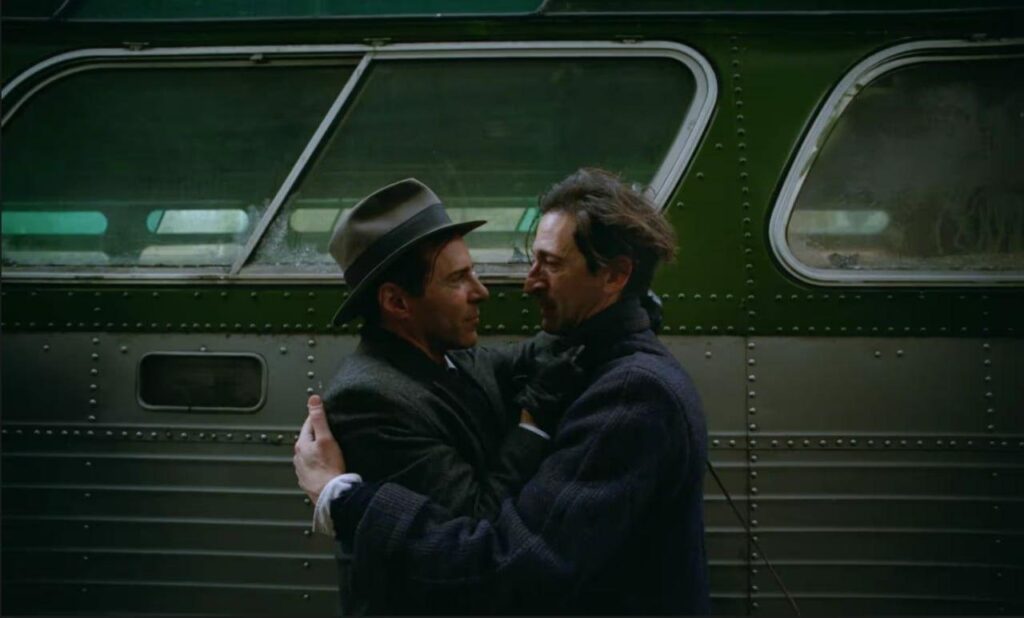
In one memorable sequence, an ARRI 235 captures a breathtaking ascent from the depths of a ship into the luminous embrace of New York Harbor. This isn’t just a technical choice; it’s a poetic nod to the film’s themes of transition and rebirth.
I revel in the way these camera movements mirror the unpredictable rhythm of life. They’re spontaneous yet deliberate—swiftly gliding through moments of quiet introspection and then surging forward with the urgency of a heartbeat. The use of handheld sequences, particularly in those gritty, urban settings, injects a sense of immediacy and intimacy. It’s as if the camera itself is a silent observer, intimately entwined with the unfolding drama.
This kinetic storytelling is a testament to Lol’s ability to capture both the grandeur of architectural forms and the fragile vulnerability of his subjects. Whether it’s a slow, measured pan that lingers on a crumbling concrete facade or a sudden, dynamic tilt that reveals hidden details of a character’s journey, every movement is imbued with purpose.
Compositions In The Brutalist
In “The Brutalist,” every composition is a study in architectural precision—a visual sonnet written in lines, angles, and spaces. Drawing on the aesthetics of brutalist architecture, the cinematography employs rectilinear lenses to craft images that are as disciplined as they are evocative. Each frame is like a meticulously drafted blueprint, where every element—be it a stark, unyielding column or a fleeting glimpse of human frailty—is arranged with deliberate intent.

The art of composition in this film is a conversation between the static and the dynamic. On one hand, the unadorned, geometric structures evoke a sense of permanence and solidity; on the other, the human elements—often caught in moments of vulnerability—introduce a dynamic interplay that softens the severity of the architectural backdrop. The resulting imagery is both rigorous and poetic, a delicate balance between order and chaos that mirrors the complexities of life itself.
As I examine each frame through the lens of my own color grading work, I’m struck by how these compositions evoke an almost tactile quality. The textures of concrete and steel become as palpable as the emotions conveyed by the characters.
Lighting Style of The Brutalist
The cinematography employs an intriguing mix of natural and artificial lighting, crafting moods that oscillate between stark realism and dreamlike abstraction. For instance, photofloods and carefully controlled underexposure work together to distill a visual mood that is both haunting and hopeful. It’s a strategy reminiscent of a chiaroscuro painting—where contrasts are not merely about light and dark, but about the tension between past and present, despair and hope.
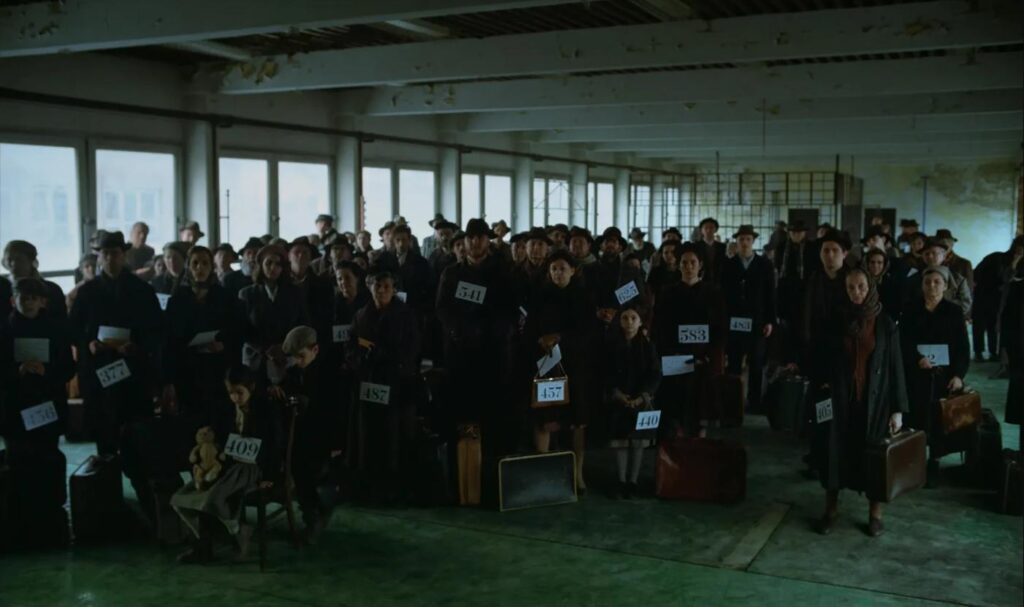
One of the most striking aspects is the decision to underexpose the film stock and then push process it—a technical gambit that lends the images a distressed, almost archival quality. This choice not only deepens the emotional resonance of each scene but also subtly hints at the scars of history, the faded memories of a bygone era etched into the fabric of the narrative.
Lensing and Blocking of The Brutalist

The film’s use of VistaVision, that venerable large-format system, is a masterstroke that pays homage to the golden era of cinema. By opting for a wider field of view without succumbing to the distortions of modern wide-angle lenses, the cinematography captures an image that is both expansive and precise.
Using Cooke S4 lenses, the team achieves a clarity that renders each shot with a crystalline, almost sculptural quality. It’s not just about seeing the image—it’s about feeling it. The lenses lend an inherent warmth and softness to the otherwise stark and rugged visuals of brutalist architecture, creating a counterpoint that is both visually arresting and emotionally compelling.
Blocking, too, is executed with the precision of a well-rehearsed ballet. Every movement of the actors is choreographed in harmony with the architectural environment. Whether it’s a carefully guided handheld shot or a wide, stately pan across a vast concrete expanse, the camera and the performers seem to share an unspoken understanding. This synchronization ensures that the spatial narrative—the relationship between character and environment—is communicated with both clarity and subtle nuance.
Color of The Brutalist
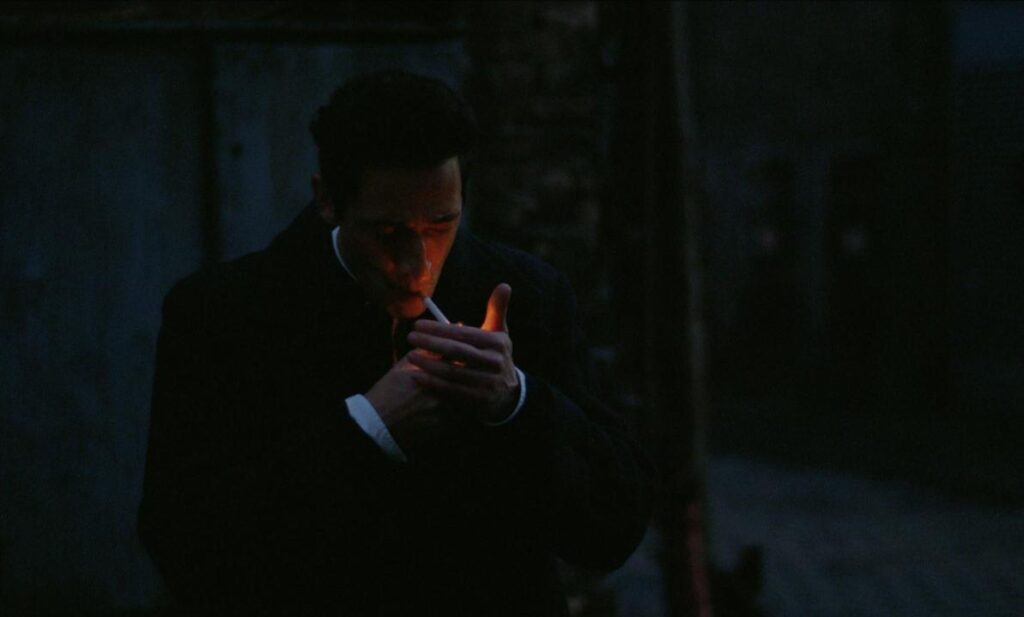
As a film colorist, I find immense pleasure in dissecting the ways in which the hues and tones of this film serve to heighten its emotional landscape.
The film’s palette is a study in contrasts. The cool, muted blues and steely grays mirror the cold, hard textures of concrete, evoking the resilience and austere beauty of brutalism. Yet, nestled within these austere tones are pockets of warmth—golden hues that hint at human vulnerability, the fragile hope that persists even in the most forbidding of environments. These color choices are not accidental; they are the result of painstaking deliberation, an effort to strike a balance between the harsh reality of post-war despair and the tender, luminous promise of renewal.
I relish how each scene seems to whisper its own story through color—whether it’s the subtle undercurrents of a sunrise on a weathered façade or the dramatic interplay of light and shadow that paints the characters’ faces with a touch of melancholy. It’s a testament to the art of color grading that what might seem like mere technical choices are, in fact, profound expressions of thematic depth. The film dares to challenge our preconceptions: that even in a world dominated by unyielding concrete, beauty can burst forth in unexpected ways.
Technical Aspect of The Brutalist
If you’ve made it this far, you’re probably marveling at how “The Brutalist” weaves together art and technology in a tapestry of cinematic brilliance. From a technical perspective, the film is nothing short of a love letter to the craft of filmmaking—a harmonious blend of nostalgic homage and cutting-edge innovation.
The production embraces a variety of film formats, ranging from the timeless allure of 35-mil celluloid to the practical immediacy of Digi Betacam. Each format has been chosen with care, a deliberate nod to the film’s expansive narrative that traverses decades and geographies. There’s a sense of ritual in the use of celluloid—a tangible connection to the history of cinema that digital formats simply cannot replicate. In a world that increasingly relies on the sterile efficiency of digital, “The Brutalist” boldly reclaims the organic, unpredictable charm of film.
Technically, the film is a marvel of precision. The meticulous selection of camera models—from the ARRI 235 for those intimate, handheld sequences to the robust 435, LT, and ST models for the grander, sweeping vistas—ensures that every moment is captured with unwavering clarity. And then there’s VistaVision, a format once synonymous with cinematic spectacle, reimagined here as a way to draw the audience back into the magic of the big screen. Its large format not only minimizes lens distortion but also infuses every frame with a palpable sense of grandeur.
It’s a visual manifesto—a declaration that technology and art can coexist in a space that is both innovative and deeply respectful of cinematic heritage. And isn’t that a testament to the enduring spirit of filmmaking?